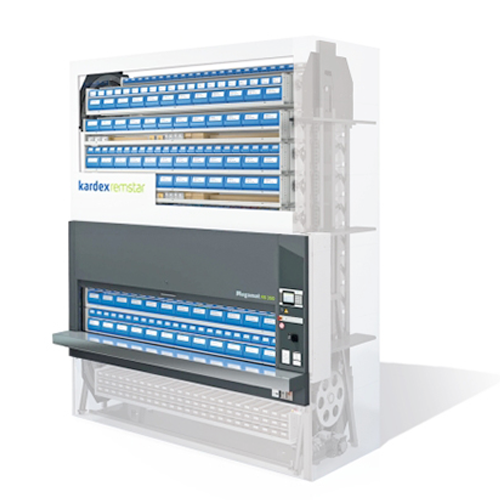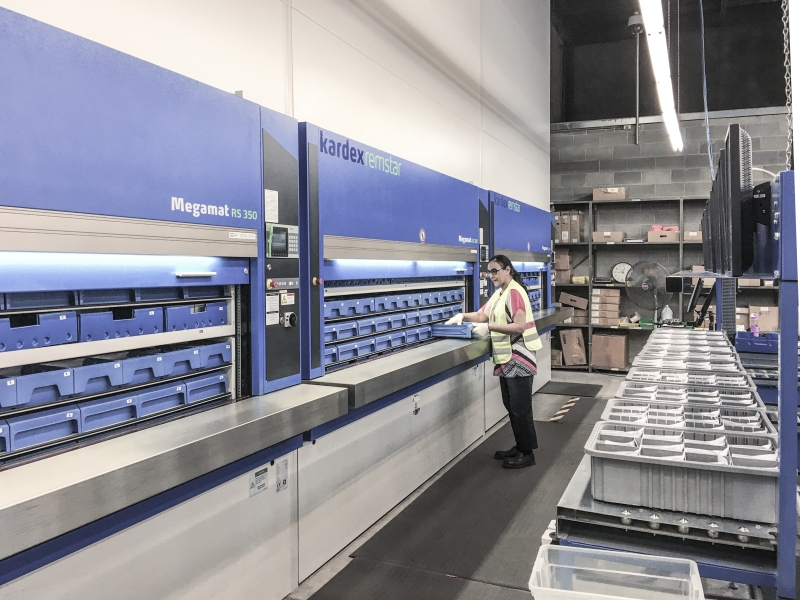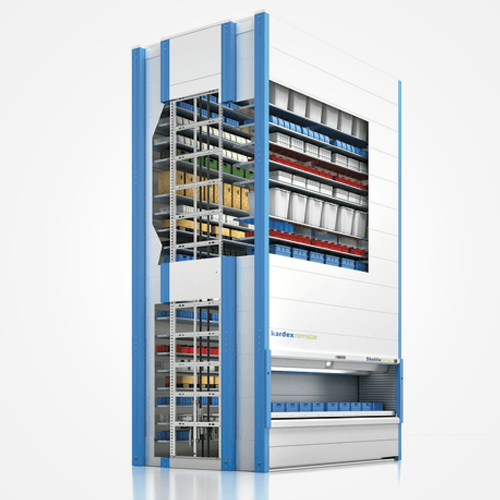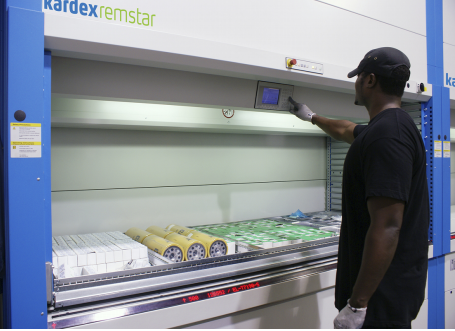2023

Vertical Carousels vs. Vertical Lifts: What’s the Best Automated Solution for Your Organization?
Automated high-density storage systems are a critical tool for solving two costly and common business problems: Lack of space and cost containment.
For example, automated storage systems can free up to 75% of warehouse floor space by turning unused ceiling height into valuable storage space. And, by making more effective use of distribution center floor and air space, these modern marvels can help you put off for years — or avoid altogether — expensive expansions or moves to larger facilities.
Standard warehouse shelving requires employees to spend 60-70% of their time walking between parts and product locations, leaving only 30% of their time for productive picking and packing.
Automated storage systems, on the other hand, deliver needed parts or products directly to the hands of stationary employees, increasing operator productivity by up to 2.5 times.
There are two automated system types: Vertical Carousels and Vertical Lifts. Which is best for you and your organization depends on a number of factors, including:
(1) Ceiling height, (2) Size & weight of parts stored, and (3) Part/product picking rate (high or low activity).
Here’s a brief summary of how you can decide which of these systems is right for your organization and its fulfillment requirements.
Vertical Carousel

Vertical carousels were introduced in the 1950s, primarily to provide for efficiently storing and picking carpet rolls. They operate on a “Ferris Wheel” principle, with numerous levels of shelving rotating at an operator’s direction and delivering parts or products to an easily accessible access window.
Today, carousel systems effectively store and deliver all manner of parts and products in every kind of manufacturing and distribution environment.
Vertical carousels are most efficient when:
- Ceiling height is relatively low, 12-15’ or lower
- Parts and products stored are uniformly small and light
- Materials being stored are relatively similar in weight and size
- High-speed picking is required in a single module installation. (Rotating carousel shelves eliminate the need to return shelves from the access window after retrieving parts.)
- Retrieved units are hand-picked with no need to transfer to conveyor or pushcart

Vertical Lifts

Automated vertical lifts were developed in the 1970s specifically for warehouse and distribution center applications. A vertical lift is basically two columns of enclosed shelving with an extraction shelf that moves up and down an open shaft between the columns. Once selected by the extractor shelf, the retrieved part is delivered to the system operator positioned at an ergonomically-designed access window.
Like carousels, vertical lifts are often integrated into inventory management systems via computer control systems and PC-based software.
Vertical lifts are most efficient when:
- Ceiling heights of 16’ to 90’ are available, allowing often-wasted air space to be used for parts or product storage
- Size of parts being stored varies from very large to very small, heavy to light
- Product weights vary widely from heavy (2,000 lbs.) to light (300 lbs.), which can cause imbalance problems with vertical carousel
- Frequent changes will be made in numbers, sizes and weights of products stored
- Application requires parts delivery to conveyor or pushcart

Now that you know the differences between vertical carousels and vertical lifts, we hope you have a better idea of which automated storage system would best suit your needs.
To learn more about how automated vertical carousels and vertical lifts systems can help make your warehouse or distribution center more cost-effective, contact us today.
